The Odd Histories of Relatively Common Things
Humans have achieved tremendous intellectual and technological advances over time. Many inventions still serve the same purpose as when they were first created, while others are now used for different tasks than their creators originally intended.
One everyday item stands out in particular: its maker was even outed as a criminal for putting it out into the world. Can you guess which device that might be?
Keep An Eye On The Figures
The abacus, which emerged in Ancient Egypt, was the first calculator. It was invented around 2000 BC and was used for the next 3600 years around the world. This hand-operated device relied on rods with beads to calculate.

Source: printsofjapan.com/ Pinterest
In 1642, a French mathematician named Pascal designed a more intricate machine. The early mechanical calculator could perform mathematical operations like addition, subtraction, multiplication, and division through the use of gears. Nowadays, calculators are ubiquitous; they are widely available on phones, tablets, and computers worldwide.
The Treadmill's Humble Beginnings
Sir William Cubitt created the treadwheel in 1818 to be used as an “everlasting staircase” for convicts. It was intended to be a form of labor. Unfortunately, some of these treadwheels were deemed too cruel. British authorities abolished their use in 1898.

Source: wicklowshistoricgaol.com/ Pinterest
Additionally, similar devices have been produced to generate power with the help of animals instead of people. However, it wasn’t until 1952 that Robert E. Bruce developed a treadmill that people could use to exercise while having their vital signs and heart health monitored.
Bridal Gowns, An Affair to Remember
The origins of marriage can be traced back to 2350 BC, but wedding dresses didn’t gain in popularity until Queen Victoria of England married Prince Albert in 1804. Wedding dress styles changed dramatically with time. By the 1920s, they had dropped waists and long headdresses. By the 1950s, they typically featured a long train.

Source: vanityfair.com
The big and flashy dresses with mid-length veils made a comeback in the 80s. Modern-day dresses have such a variety that it’s hard to assign them to one particular category.
The History of Breath-Freshening Agents
Mouthwash has a long history, referenced in Chinese, Greek, Egyptian and Roman literature. One of the oldest known instances is recorded in 1 A.D. Rome, where people purchased bottles of Portuguese urine to use as a mouth rinse.

Source: businesiInsider.com
Other variations (including tortoise blood) were used throughout history until the 18th century when oral bacteria were discovered. Scientists began exploring ways to kill bacteria; ammonia and alcohol were heavily utilized for this purpose. Alcohol is still used today in many types of mouthwashes.
The Innovation of Television: A Technology Advancement
General Electric produced the first mechanical television in 1928, which was propelled by quickly rotating wheels. The Queen’s Messenger, the first TV drama, was broadcast on the 3-inch screen Octagon Television, which was created as an experiment.

Source: Aaron Williams/ Pinterest
Televisions have undergone a great deal of development since then. Cable, color, and improved screen resolution, just to name a few! As of right now, we enjoy Smart TVs, which include internet connectivity, a wide variety of apps, and 3D functionality.
The Transition of Bathing Gowns To Bathing Suits
In the 18th century, sea bathing was popular, but it was proper to protect skin from the sun by donning hats, gloves, and shawls. In order to prevent their bathing suits from flapping in the wind and baring their legs, women would additionally stitch weights inside them.

Source: backyardocean.com/ pinterest
The bathing suit today seeks to achieve the exact opposite of bathing gowns. They aim to let their wearers get as much sun as possible. It wasn’t until the 1940s that the bathing suit was divided into two and named a “bikini.”
The Exoskeleton-like Corset
Catherine de Medici presented the iron corset to the French at the start of the 16th century. It was believed that the corset provided some kind of protection from harm against roguish types. Corsets developed into linen—or for the affluent, silk, taffeta, and velvet.

Source: mode.nms.ac.uk/ Pinterest
Waist trainers, which are composed of thick fabric and strong metal boning—promoted as products that can progressively shape your hips and waist into a well-defined hourglass form—have replaced corsets in modern society.
Animals Have Always Sparked Our Curiosity
Since the time of the ancient Egyptians and Mesopotamians, zoos have been a mainstay of human culture. Zoos were developed as exclusive collections held by powerful individuals to display their fortune. They were referred to as “menageries.”
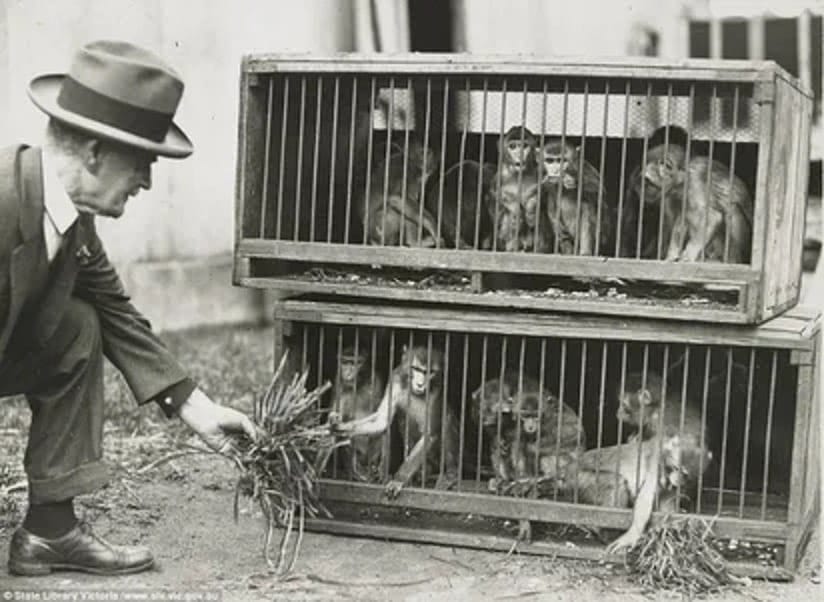
Source: One Green Planet
In the 18th century, during the Age of Enlightenment, when more emphasis was placed on science, reason, and logic, the design of the contemporary zoo rose in popularity—as did zoology. Zoos today are aimed at educating and amusing the public while putting an emphasis on species preservation and exploration.
High Heels for Everyone
Until the Victorian Era, high heels were historically worn by mostly men, with wealthy women also participating. Heels were worn by ancient Egyptians, medieval Persia, and by 16th century royalty to appear taller and tower over subordinates.
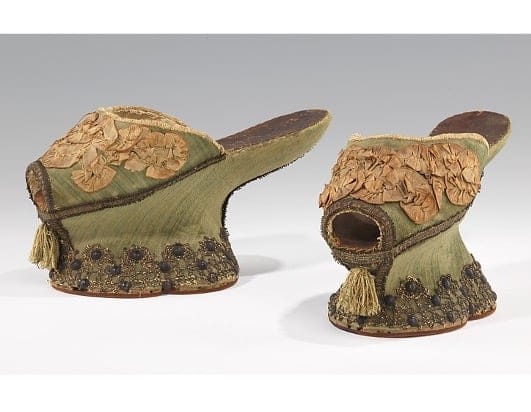
Wikimedia Commons/ MetMuseum.org
In France, after the French Revolution, high heels were removed from the market to leave old aristocracy in the past and avoid the appearance of abundance. By the Victorian era, heels were thinner and thought of as erotic, so men ceased wearing them.
A Whole New Meaning to "Lick the Plate"
In Europe, early versions of plates were made from whole wheat bread that was aged for a few days beforehand and then sliced into two three-inch rounds. Afterwards, the plates would be given to the poor or fed to animals. This lasted well into the 16th century.
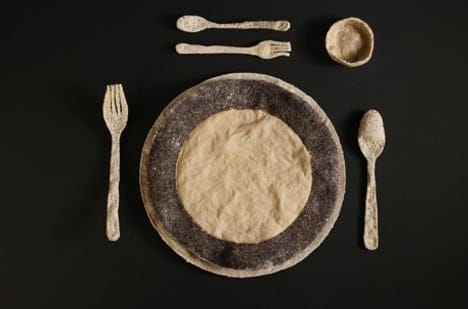
Source: Dornob
Plate collecting began in the Islamic world and spread to Europe. Mostly porcelain plates were collected and in the 18th century many royal families and monarchs would collect and display them. Today, we have plates made from plastic, porcelain, clay, wood, and more.
T-Shirts for the Single Men
While it is difficult to think of a before and after with something so structurally ingrained into our daily lives, there was a time when your average t-shirt wasn’t the norm. Before 1904, men wore buttoned shirts and button shirts often lost their buttons.
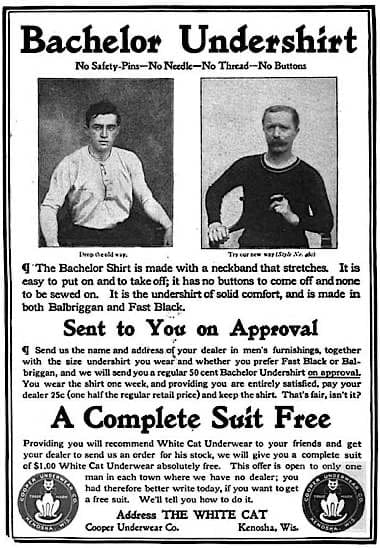
Source: scienceabc.com
Sewing was considered a task for women, which obviously proved a problem for bachelors. That is when the Copper Underwear Company ran an ad to advertise a shirt that was stretchy enough to be pulled over one’s head. Today, you’re more likely to see a man (and a woman) walking around in a t-shirt than a button up.
From War to Wine, The Corkscrew
Modern day corkscrews are typically leading to something good, but at its conception, corkscrews were modeled after a tool of war. The tool was called a “gun worm” and was a metal claw that was used to clear misfired ammunition from musket barrels.
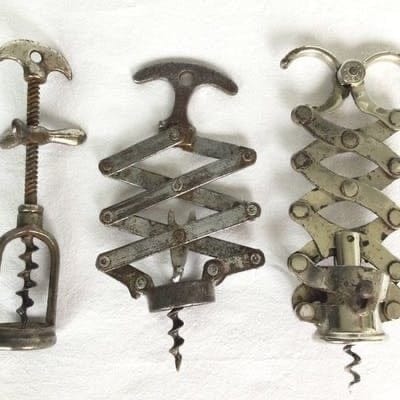
Source: Barnebys
The first official corkscrew patent was filed in 1795 by an English Reverend named Samuel Henshall.
Chainsaws Got Their Start In Medicine
If you are squeamish skip this tidbit of history. The first chainsaw was pioneered by two Scottish doctors in the 18th century and was created to assist in difficult childbirth and removal of dead bone. This was prior to the caesarean section existed.
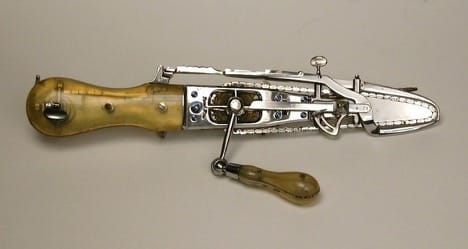
Source: www.timetoast.com
It wasn’t until the 1830’s when a machine using a chain to cut wood is mentioned with specific reference to loggers and wood cutting.
Kleenex As A Gas Mask Filter
Before Kleenex ended up as the go-to tear wiper and nose-blower, these facial tissues were originally developed to work as disposable gas mask filters during World War One.

Source: Grunge
The development of the malleable and thin cellu-cotton was found to be an effective cotton substitute for dressing both wounds and filtering out air that came through gas masks. The Kleenex was invented by Kimberly-Clark and is a far cry from the way we use the famous tissues today.
The Nefarious Beginnings of Fertilizer
Before we were using fertilizer to grow our yards into luscious plots of life, the chemical solution was used as an act of evil and destruction. During World War One, a German physicist named Fritz Haber became known as the “father of chemical warfare.”

Source: starsinsider.com
Haber developed and weaponized poisonous gas. Eventually he was declared a war criminal. Today, fertilizer isn’t recognized for its nefarious beginnings.
A Timid Doctor's Hesitation Led to the Stethoscope
In 1816 a French doctor inadvertently invented the stethoscope due to his embarrassment at touching women. At the time, doctors would press their ears to patient’s chest to gauge their heart. However, René Théophile Hyacinthe Laënnec felt ashamed to put his face so near to women’s chest, so he rolled a large tube of paper to allow him to listen from a distance.
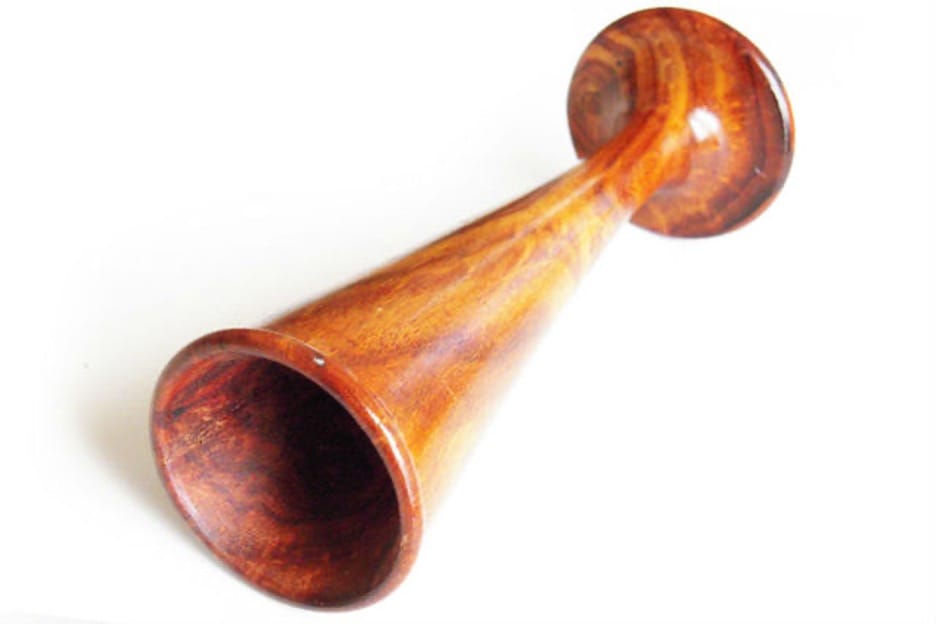
Source: www.timetoast.com
By 1829 the stethoscope had evolved to an actual device, however it made it, so the doctor had to have a specific position to accurately listen to the patient’s heart which was uncomfortable. Today, we have incredible listening devices with complete ease of access.
The Invention of Anesthesia
Before the invention of anesthesia, the faster a doctor could perform a surgery, the more highly regarded they were. This was due to patient’s being awake during their surgeries. Oftentimes, patients would be hit unconscious or given copious amounts of opium or alcohol to help them through.
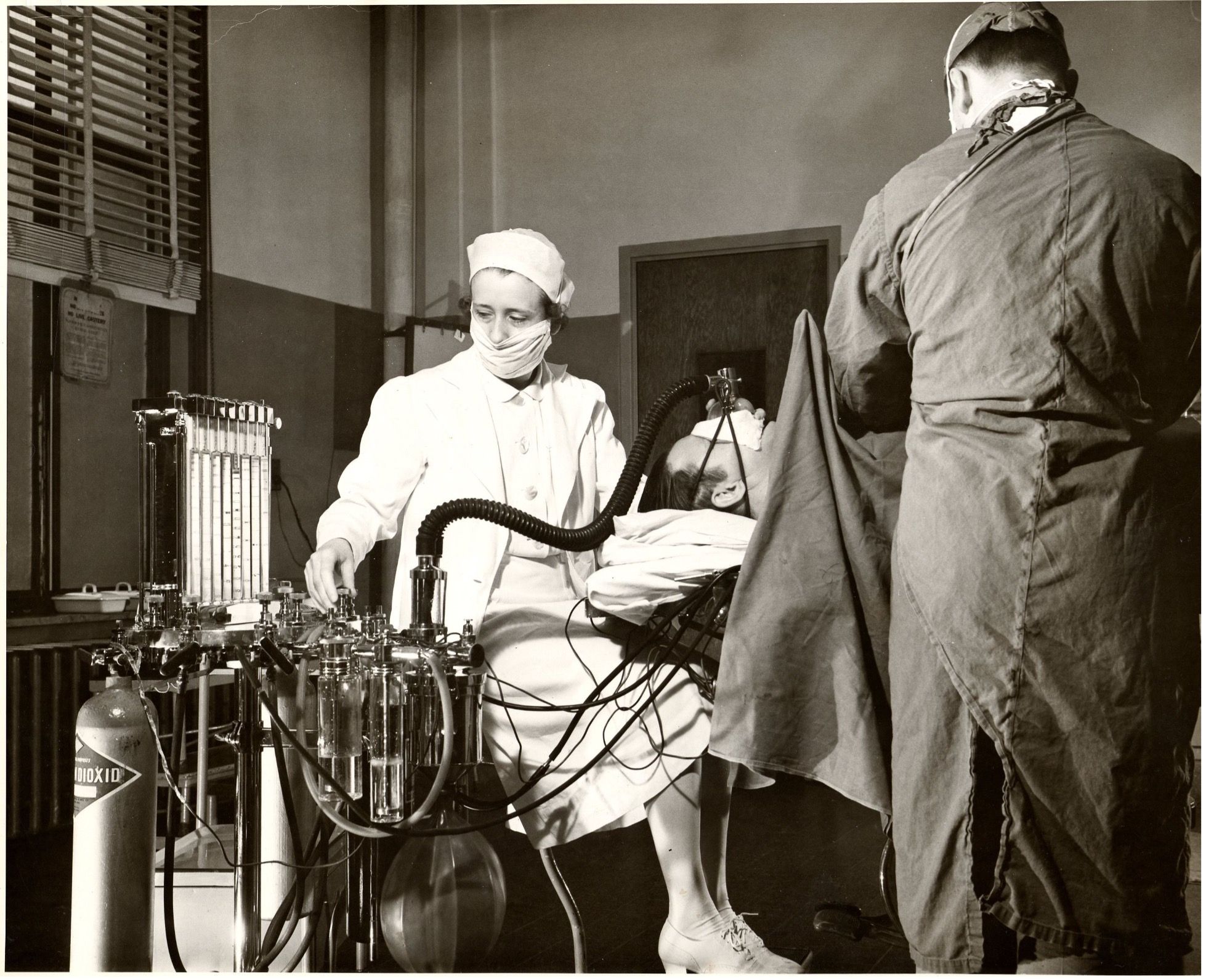
Source: Pintrest
On October 16th, 1846, a dentist named William T.G. Morton used sulfuric ether to anesthetize a man. This was successful, and subsequently chloroform was discovered as an anesthesia as well. Today the most regularly used anesthesia include halothane, enflurane, isoflurane, methoxyflurane, and nitrous oxide.
Facial Hair Be Gone! Razors are Here
Evidence of razors can be found on the walls of prehistoric people (such as shark teeth and flint knives) and in the 4th millennium BC in some Egyptian tombs (such as gold or copper razors).
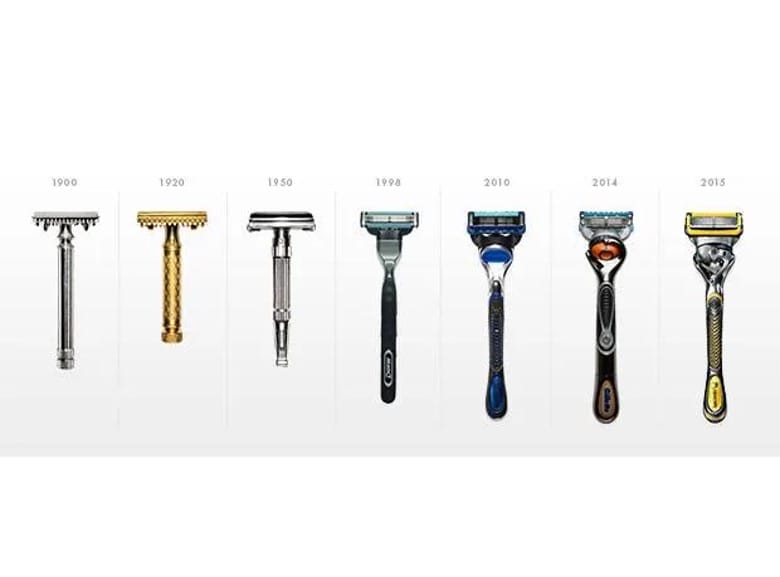
Source: bosem.in
Shaving wasn’t comfortable or safe until Gillette teamed up with an MIT professor to figure out a way to stamp blades out of sheets of high-carbon steel, finally creating their first batch by 1903. Gillette’s idea was to create something that people bought, used, and threw away. Today, this model is still followed though we can buy razors that have replaceable heads and forever-use bodies.
The Evolution of Contraceptives
Contraceptives date back to at least 1500 B.C in Egypt, where records indicate women would create a solid paste called pessary that they would insert into themselves before intercourse. The first known form of a condom also came from Egypt and was a goat bladder, dating back to 3000 B.C.

Source: interestingengineering.com
In 1844, Charles Goodyear patented the vulcanization of rubber, leading to the mass production of rubber condoms. Today, we have a multitude of hormonal and physical options for both men and women for birth control.
Oneida Limited, From Commune to Cutlery
Today, Oneida Limited is a behemoth tableware and cutlery manufacturer and seller and is one of the world’s largest designers and sellers of stainless steel and silver plated cutlery and tableware to boot. However, at its conception, Oneida was a religious commune in New York, founded by a radical utopian philosopher named John Humphrey Noye.
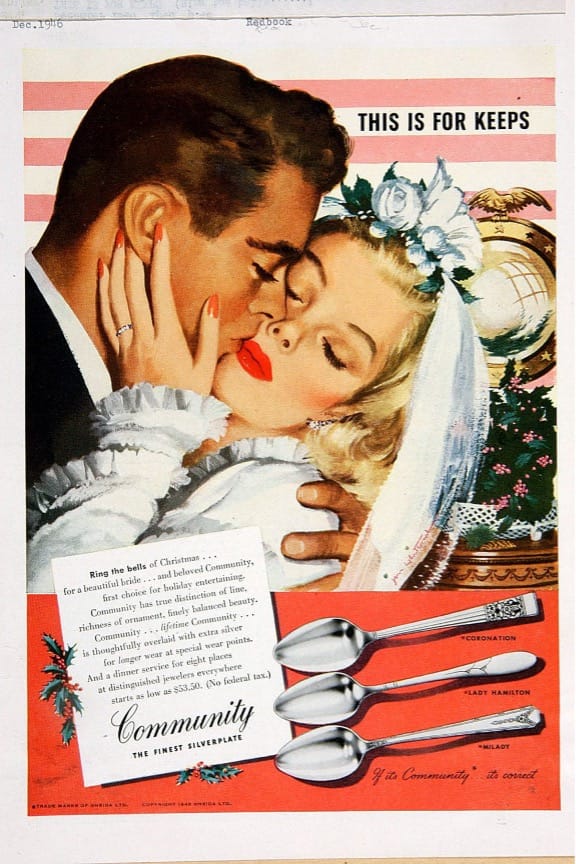
Source: WBUR
Noye promoted free love and unusual contraception methods. Silverware making was simply a side business to generate money, however the commune’s decline allowed him to turn it into a full-scale operation.
The Invention of Mechanized Warfare, the Tank
The history of tanks begins in World War One when steel-clad all-terrain vehicles were introduced as a response to the issues brought on by trench warfare. This ushered in mechanized warfare and became a mainstay in ground armies.
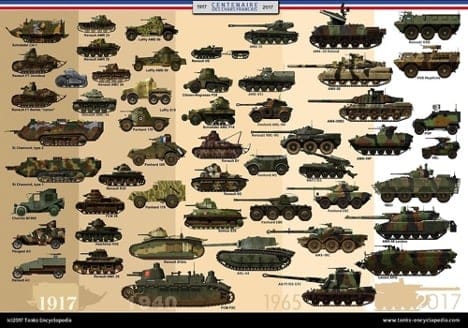
Source: Pintrest
Today, the tank is still widely used, with around 60,000 active tanks worldwide. China has the most tanks, clocking at over 7,000, Russia has around 3,300, and the United States jas around 2,850.
The Tongue of the Mind, Pens
A pen, one of humanity’s most important developments. They began in ancient Egypt as hollow tubular marsh grass was filled with writing liquid and evolved to the quill by the 6th century in Seville, Spain. The quill was made from the feathers of birds and then dipped into ink.
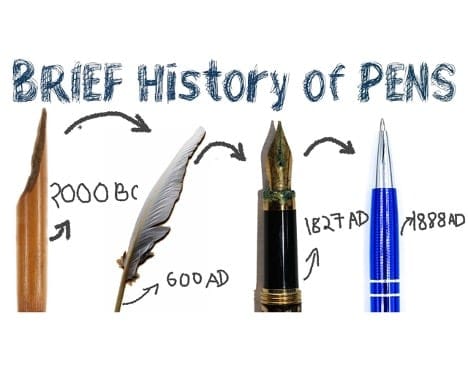
Source: YouTube
In 1822, the steel point pen was invented by John Mitchell Birmingham. By 1827, the fountain pen was invented and removed the need to constantly dip pens into ink. Finally, in 1943 the ballpoint pen was created which introduced quick-dry ink.
Showers Used to Only Be for the Rich
The evolution (and ever-evolving) shower has taken leaps and bounds with its adjustments. Around the 1900’s, the rich invested in washstands and hip baths in the bedroom, but it wasn’t until the 1920’s that showers began to infiltrate middle-class homes within the U.S, particularly in new homes.
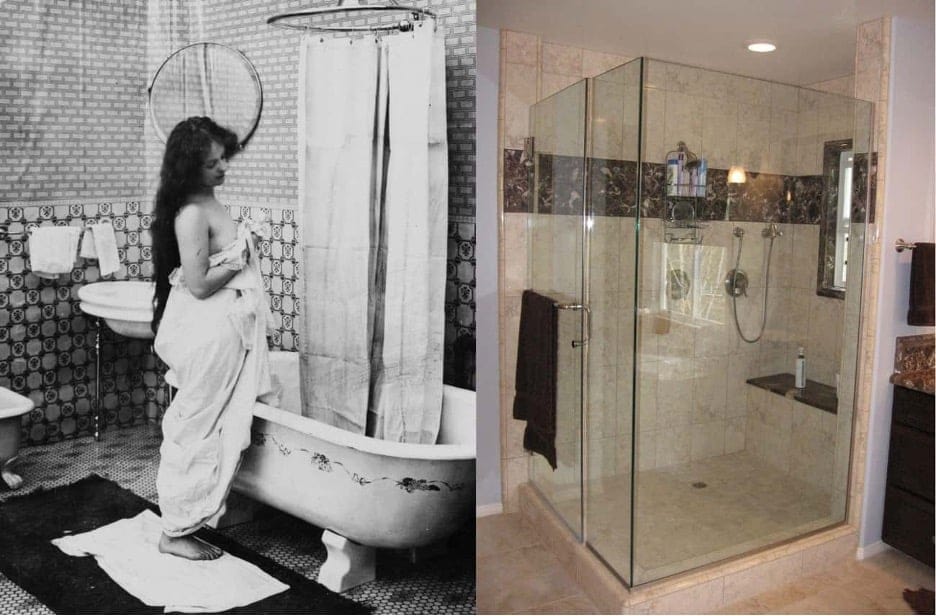
Source: www.ranker.com
You can see the contrast of the shower over the porcelain enamel bathtub with the tiled shower that has a removable shower head and plenty of space to move, sit, and store products.
Typewriters to Computers
The evolution of the typewriter to the modern-day computer is quite amazing. Typewriters are a means to typing characters onto a single piece of paper via an inked ribbon that responds to each key hit.

Source: Pintrest
If a mistake was made, that was too bad! You could start over or accept the mistake. Today, we do our key-striking on computers with screens and “backspace” buttons. You certainly wouldn’t be reading this article on your typewriter.
The Development of the Car
Though the first gasoline car was invented in May of 1886 by Karl Benz, the concept dates to the 15th century when Leonardo da Vinci was creating designs and models for transport vehicles.
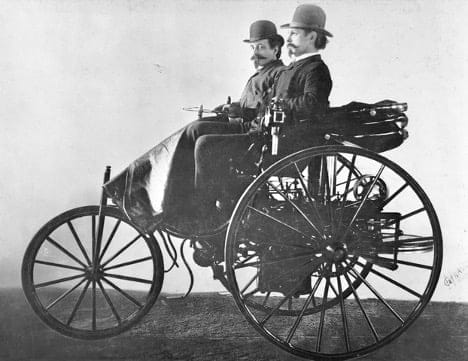
Source: Letsweekly
Prior to the gasoline automobile, an inventor in France in 1769 built the first steam vehicle, and in 1832 the first electric carriage was created by an inventor in Scotland. Today, we have mostly gasoline automobiles, but efforts are being made towards hybrid and/or electric cars for the betterment of the environment.
The Invention of Video Games and the Evolution of Graphics
Video games have had a stellar evolution since their conception in 1952, when a British professor created OXO, a tic-tac-toe game that was a part of his doctoral dissertation at the University of Cambridge.

Source: pocket-lint.com
Since then, the graphics have gone from cubic and unrealistic to incredibly realistic and life-like. Not to mention the latest developments in virtual reality which are hyper lifelike and immersive.
How We Read Has Changed a Lot
Humanity has been documenting themselves since ancient times, telling stories and archiving history. One of the first “books” can be found in ancient scrolls which date back to the 4th millennium BCE and are pictured below.

Source: Artnet News
Codices (or singularly a “codex”) more closely resembles a modern-day book and was created by the Romans as early as the 1st century CE. Today, many of us read our content on eBooks and online, however the significance of books is timeless to the evolution of humanity.
Head Safety Had Soft Beginnings
The original football helmets were called “Circa” helmets and were soft with very thin padding and leather. These late 1800 of course provided very low protection for players. The first plastic helmets did not appear until 1939 and was created by John T. Riddell.
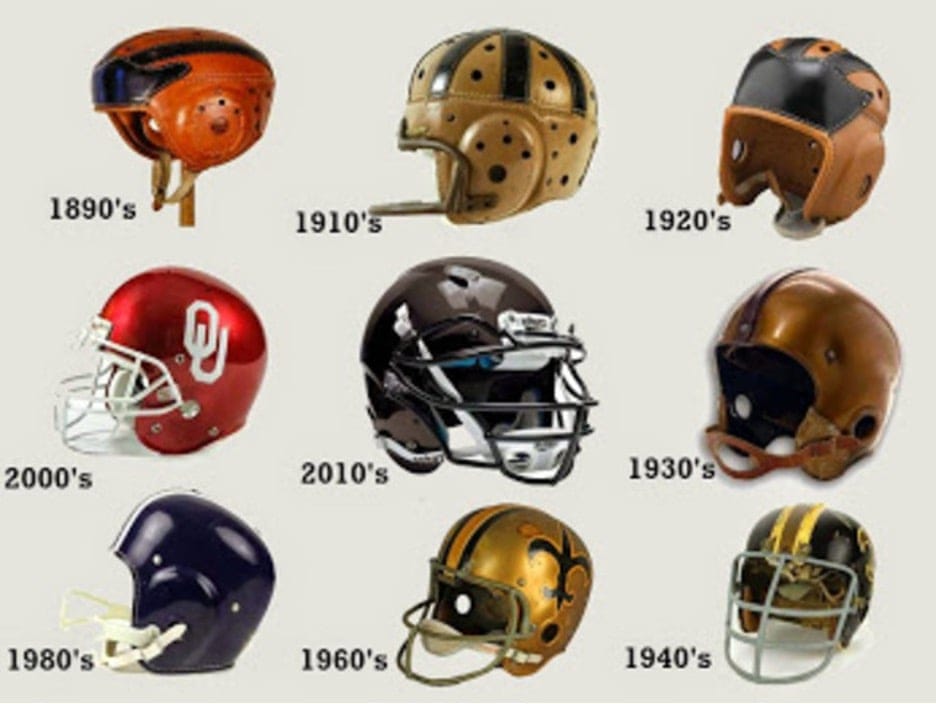
Source: Timetoast
The Riddell company still leads the football helmet and gear industry and has since created much more effective helmets with padded interiors and harder and smoother plastic on the exterior.
Cleaning Get a Win with the Invention of Vacuums
In 1860, a man from Iowa invented a carpet sweeper that would become the predecessor of the vacuum cleaner. It had a rotating brush and bellows which generated suction; however, it was never mass produced.

Source: iCollector.com
The vacuum cleaner went through a flurry of evolutions (as many as nearly one a year since 1898) and by the 1920’s the bag and wheels that we’ve come to rely on were implemented. In 1969 the first self-propelled vacuum was invented. By 2002 we had the Roomba, which utilized AI sensors and cleans a room without any human involvement.
Humans Have Nearly Always Valued a Clean Mouth
The origins of teeth cleanliness date back to prehistoric times when humans would use horsehair and twigs to remove particles from in between their teeth. Dental floss wasn’t widely used as a product until the 19th century when in 1815 a dentist from New Orleans came up with a thin, waxen silk thread to help patients keep their mouth clean.
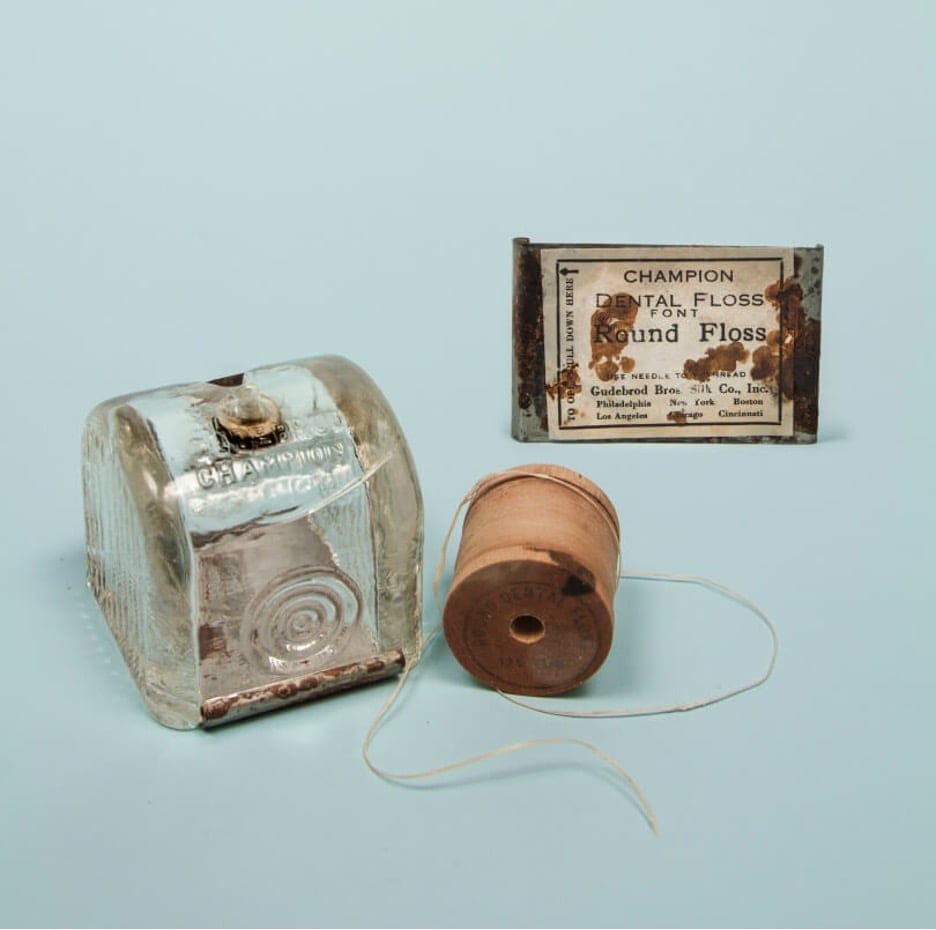
Source: Different Truths
By the 20th century, silk floss had phased out and was replaced with nylon floss which is more durable and cost efficient. Today, there is such an array of variety and flavors, we really have no excuse to not take care of our teeth.
The Unfortunate Staying Power of Plastic
The invention of plastic was viewed as a miracle in 1907 when Leo Baekeland invented Bakelite, the first fully synthetic plastic, meaning that is contained no molecules found in nature. Initially, plastic was to be used for items that were for long term use. However, with the low price point, strength, and durability, it quickly became a widely used product for one time use items.
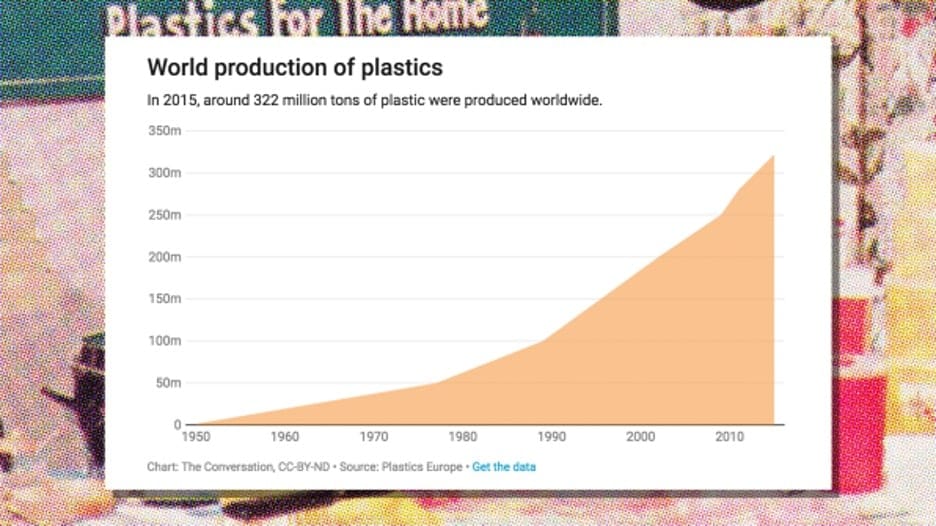
Source: Fast Company
Plastic does not decompose, meaning that all plastic that has ever been produced is still present in the environment since the plastic boom of the 1950’s.
Pencils Have Been Around a Long Time
Ancient Roman scribes used something called a “stylus” (sound familiar?) which was a thin metal rod that left readable marks on papyrus. Other early styluses were made of lead.
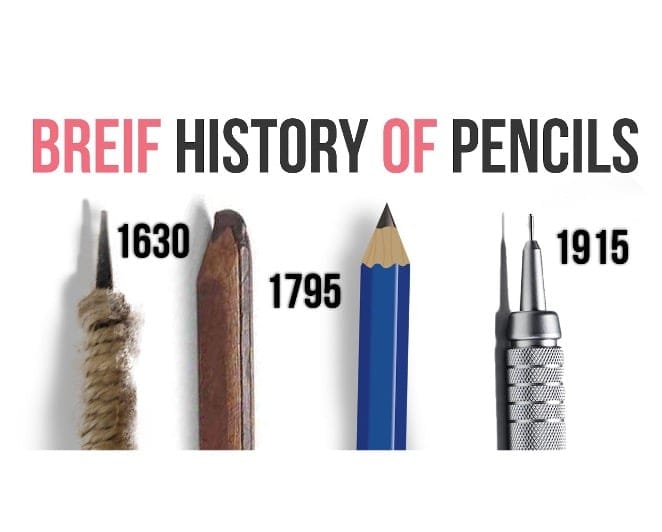
Source: YouTube
Graphite came into widespread use after a large graphite deposit was found in England in 1564. It proved darker than lead, however it was more brittle and required a holder. Originally it was wrapped in string, eventually evolving to wooden sticks. Today, the wooden stick/graphite is still common, along with plastic and refillable mechanical pencils.
Humans Learn to Track Time
Sundials were the first device created and used by mankind to track time. It was first created by the Egyptians and was invented around 100 AD. In 520 AD, the Chinese invented the candle clock, which had a wax candle start at a certain height and melt to a lower height. The idea was that the increments that were melted tracked the time.

Source: Projects at Harvard
The modern-day timekeeping element of a clock is a harmonic oscillator that vibrates at a particular frequency. The object can be a pendulum, a tuning fork, a quartz crystal, or the vibration of electrons in atoms as they emit microwaves.
Mapping Out the World
The first empirically correct map was created Diogo Ribeiro, a Portuguese cartographer who created the first scientific world map in 1527. Ribeiro used empiric latitude observations to trace the world’s coastlines.
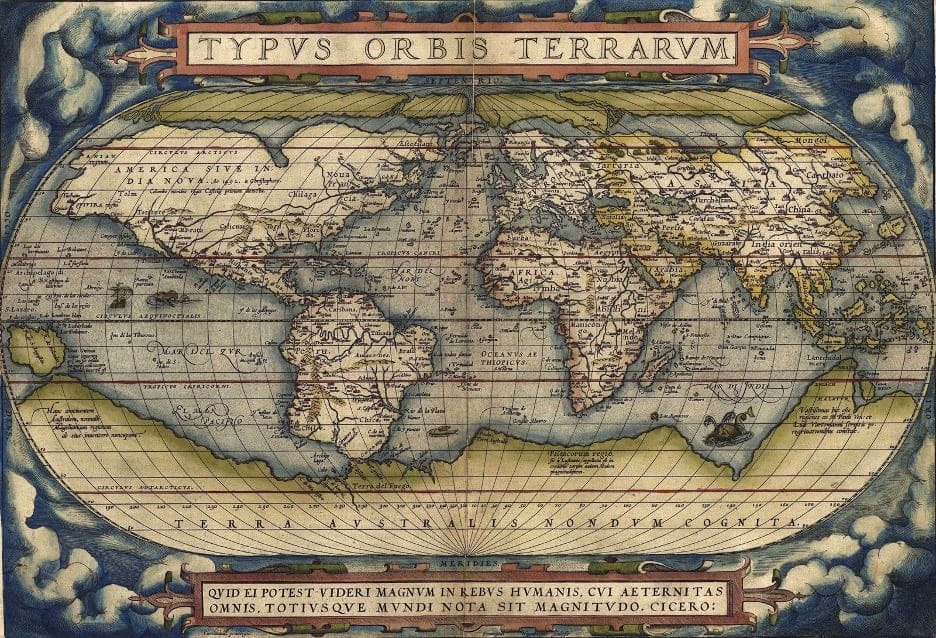
Source: Encyclopedia Britannica
Fast-forward to 1929 when humans began using airplanes to photograph large land areas and document them for maps. Today, the concept of a physical map has evolved into GPS, or global positioning system, which has been installed into computers and phones for ease of access.
The Building Blocks of the Internet
Arguably one of the most important inventions in recent history, the internet was not invented by one person alone, it was a collection of ideas built upon each other. Initially, in 1959. it started as a communication network with no central command point meant to control the U/S Air Force fleet if a nuclear attack ever happened.

Source: readwrite.com
What we use today, the modern internet, most closely resembled Tim Berners’ model in 1989. He christened it the World Wide Web, which was as he put it “…a power in arranging ideas in an unconstrained, weblike way.”
The Evolution of Visual Documentation
The first commercially advertised photographic camera was built by Alphonse Giroux in 1839 and allowed people to take pictures in black and white.
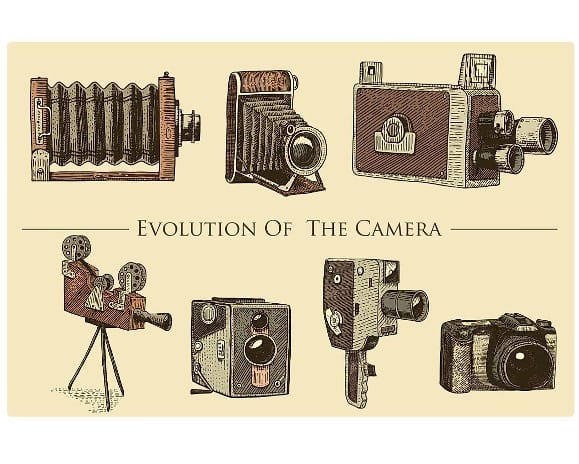
Source: World Atlas
Many variations came out of this invention, including in 1948 when the Instant Camera (aka the polaroid) that could create positive prints in under a minute. In 1981, the digital camera was invented and by 1999 Samsung had put one of the first built-in camera into a cell phone.
The Effort it Took to Listen to an Album
Before we had access to essentially every song we desired, civilization had to put forethought into their music experience. Vinyl required the purchase of a record which was stored in a sleeve, putting it on the turntable, adjusting the needle and flipping it on.
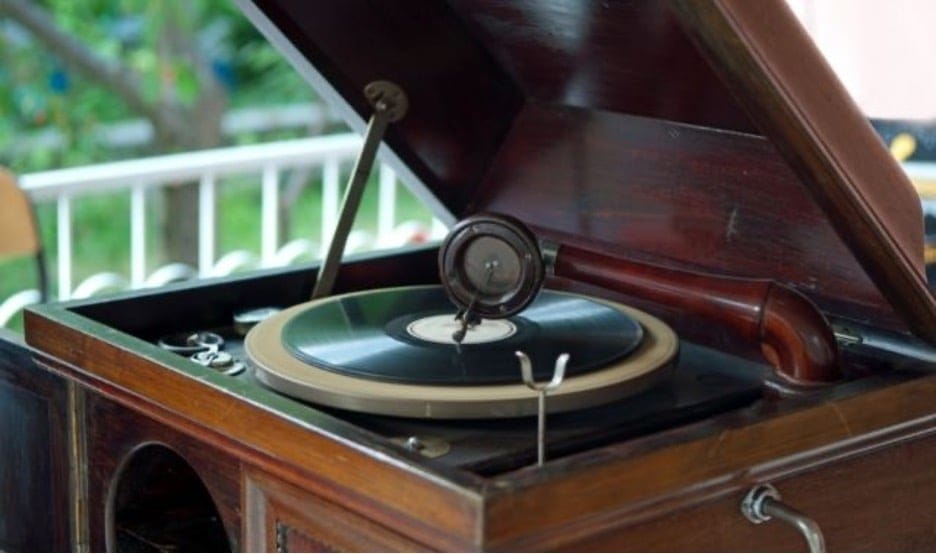
Source: Family Tree Magazine
Compare that to the intensely personalized and lightning access way music is now listened to and shared. It creates a large contrast and amazing arch of the music streaming evolution.
